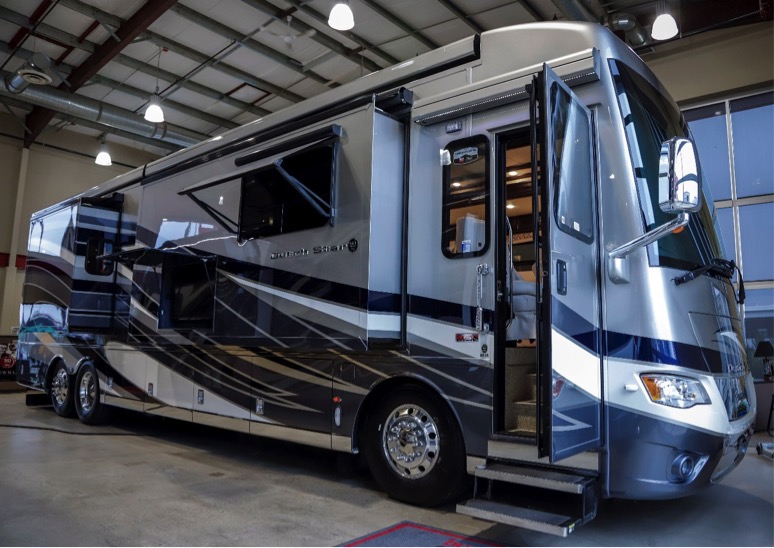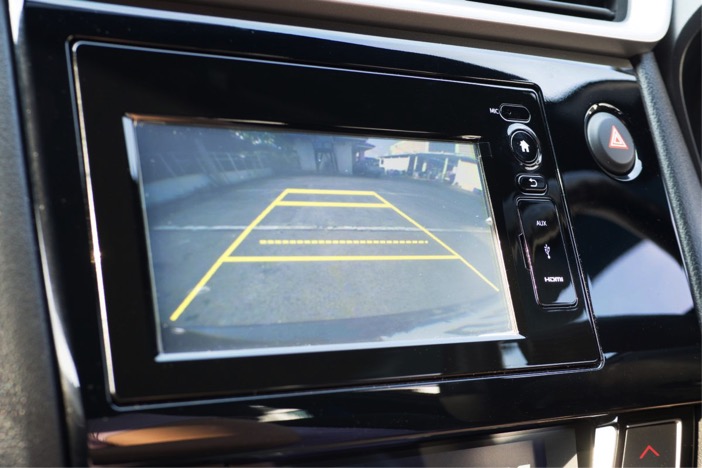
Owning an RV can bring you a lot of pleasure. Zipping around the country and sleeping over at remote natural locations is an amazing experience. Even though RVs come with many benefits, there really is a trick to driving one of these beasts.
Getting in and out of parking bays and camping areas can be tricky business. If only you could have eyes in the back of your head, then reversing would be so much easier. Since this is anatomically impossible, vehicle creators have designed purposeful RV backup cameras.
Backup cameras have become modern fixed features in a variety of vehicle’s interior. To ensure the safety of the driver, passengers, and pedestrians, backup cameras are almost a standard for anyone who spends a lot of time on the road.
What Is a Backup Camera?
It is a camera that is placed at the back of a vehicle. The image captured by the camera is shown on a live video screen. The live video can be seen by the driver as it is placed on or near the dashboard and steering wheel.
The monitor has line indicators that allow drivers to backup safely, while following the guidelines of the lines marking the road behind the vehicle. Making backing up more convenient and safer. It basically serves as an easier-to-use rear-view mirror system.
Backup cameras are especially useful for big roadworthy vehicles. Vehicles such as trucks and RVs, make backing up difficult, because they do not have a see-through rear window. There are in fact many blind spots when backing up in a big vehicle. Using an RV backup camera makes the whole procedure safer and easier.
What Should You Consider Before Purchasing An RV Camera?
Investing in a good quality piece of equipment will ensure your road safety. If your RV does not come with a built-in backup camera then you can purchase or install your own. Here are a few things you have to consider when purchasing an RV camera system.
Wired or Wireless
Both wireless and wired systems come with a series of pros and cons. Wireless devices do not need a lot of prepping and planning while installing. You do not have to think about where you want to lay the cords and wires.
The wireless device comes as either a digital or an analog system. Analog systems are more affordable, but has the disadvantage of the signal being influenced by external factors like the running of diesel engines.
If you are towing an extra trailer with your RV, the wireless device is the best option. Having a wireless device gives you the added benefit of being able to move cameras, from the back of your RV to the back of your trailer.
The only disadvantage to wireless systems is that the signal, from the camera to the monitor, can be interrupted. Wired systems do not have this problem.
Wired systems are more difficult to install, but have a more constant signal. The wire, connected to the camera, should be laid from the back of the RV to the front monitor. In this case, you might only be able to connect one camera to the system. If you want to add multiples, you are going to have to hook up more wires.

Cameras
You have to consider where can you place the cameras? Some can only be placed on the rear window, whereas others can be placed on the sides of the RV; functioning as rear-view mirrors.
Cameras can be found in a variety of different shapes and sizes, because they are becoming equipment that is part of road safety. Make sure you are aware of camera placement and amount before purchasing.
To learn more about different kind of backup camera types, read here: https://en.wikipedia.org/wiki/Backup_camera
Installation Process
You have to double-check whether your RV is compatible with the kind of system you would like to install. A wired system might demand some drilling holes and layout design. Whereas a wireless system will be a quick hook-up and go.
If you are not familiar with installing a video monitor system, then the best option is to take your RV to an expert and let them do the work. It will most certainly turn out much neater and cleaner.
Cost
Most RV backup camera systems come at an extremely affordable price. You can even consider buying a previously owned system from an RV owner. Avoid buying a low-quality camera system just to save a few extra bucks. Spending a little bit more on a better system will be beneficial in the long run, or shall I rather say, in the long drive.
Alerts
Monitors should be equipped with indication lines as well as alert notifications. Check whether your monitor can be connected to speakers. Alerts are usually beeping sounds whenever you backup too close to a curb or another object.
Even though some monitors are soundless, having a few vocal alerts will add more value to your new device.
Investing in an RV backup camera will ensure you are safe on the road.







